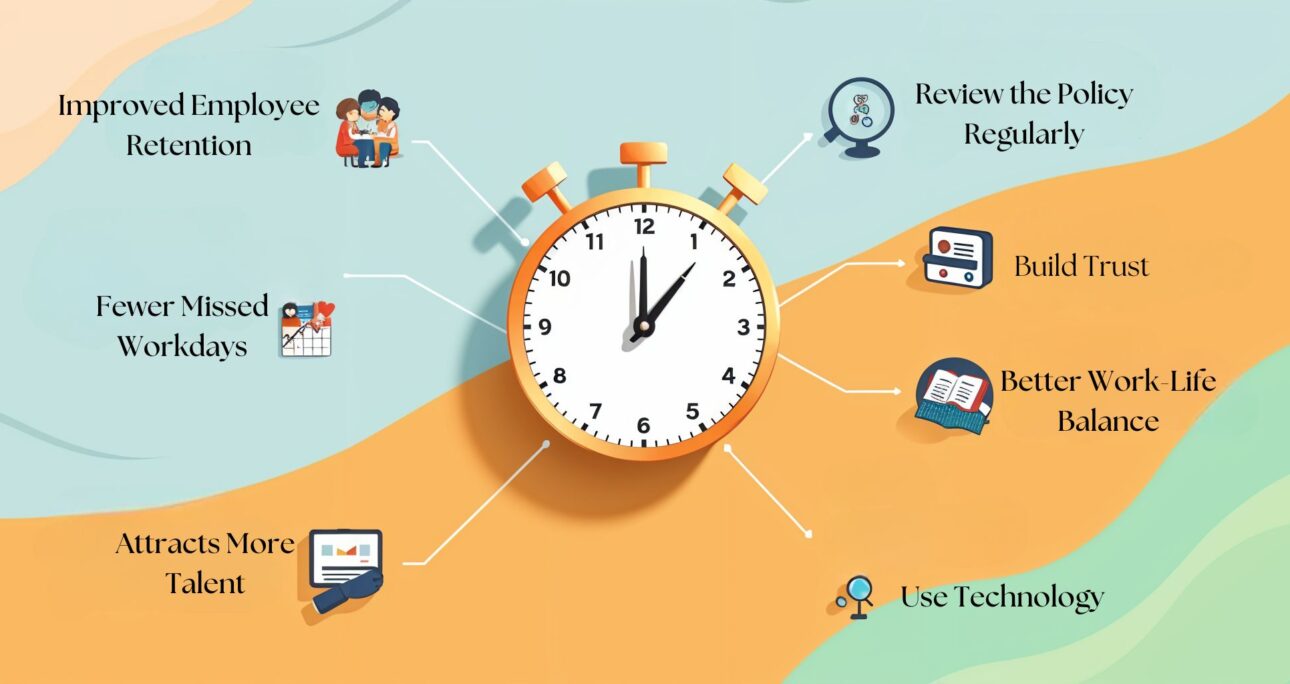What is Flex Time Policy?
A flex time policy lets employees adjust their work hours to fit their personal and work needs. Unlike the usual 9-to-5 schedule, it allows people to choose when to start and finish work, as long as they get their tasks done. This approach is becoming popular because it supports work-life balance.
Benefits of Flex Time Policy
Flex time offers several advantages for both employees and employers:
- Better Work-Life Balance: Employees can plan their work around personal needs like family time, health appointments, or errands, making life less stressful.
- Higher Productivity: When people work during their most focused hours—whether early in the morning or late at night—they get more done.
- Improved Employee Retention: Flexibility is a perk many people want. Companies that offer it often keep their employees longer because they feel cared for.
- Fewer Missed Workdays: Flex time helps employees manage personal matters without needing to take entire days off.
- Attracts More Talent: Offering flexible hours makes it easier to hire great people, even those who can’t work traditional schedules.
Tips for Making Flex Time Policies Work
To make flex time successful, companies need to plan carefully. Here’s how:
- Set Clear Rules: Explain what’s allowed, like required hours when everyone must be available (if any), and make sure everyone understands the policy.
- Use Technology: Tools like time-tracking apps and collaboration platforms help teams stay on track and communicate effectively.
- Build Trust: Focus on results, not how or when work gets done. Trust your employees to manage their time.
- Train Managers: Help supervisors learn how to lead teams with flexible schedules and ensure fair performance evaluations.
- Review the Policy Regularly: Ask for employee feedback and make improvements to fix any issues.
Flex Time and Remote Work: A Perfect Match
With more people working from home, flex time is even more helpful. It allows employees to balance work with household responsibilities, ensuring they stay productive without added stress.
Common Challenges and Solutions
Introducing a flex time policy can come with challenges. Here’s how to handle them:
- Communication Issues: Schedule regular check-ins and use team chat tools to keep everyone connected.
- Overworking: Encourage employees to set clear work hours and take breaks to avoid burnout.
- Team Coordination: Plan team-building activities to maintain a good team spirit, even with different schedules.
Examples of Success
Big companies like Google and Netflix have used flex time successfully, showing that this approach can improve both work results and employee satisfaction.
Is Flex Time Right for Your Business?
Flex time may not fit every job or industry. Consider your team’s needs, customer expectations, and daily operations before deciding.
Looking Ahead: The Future of Flex Time
As workplaces evolve, flex time is becoming more common. Companies that offer this option now can attract great talent and stay competitive in the future.
By introducing a flex time policy, businesses can create a happier, more productive workforce. When done right, it’s a solution that benefits everyone!





